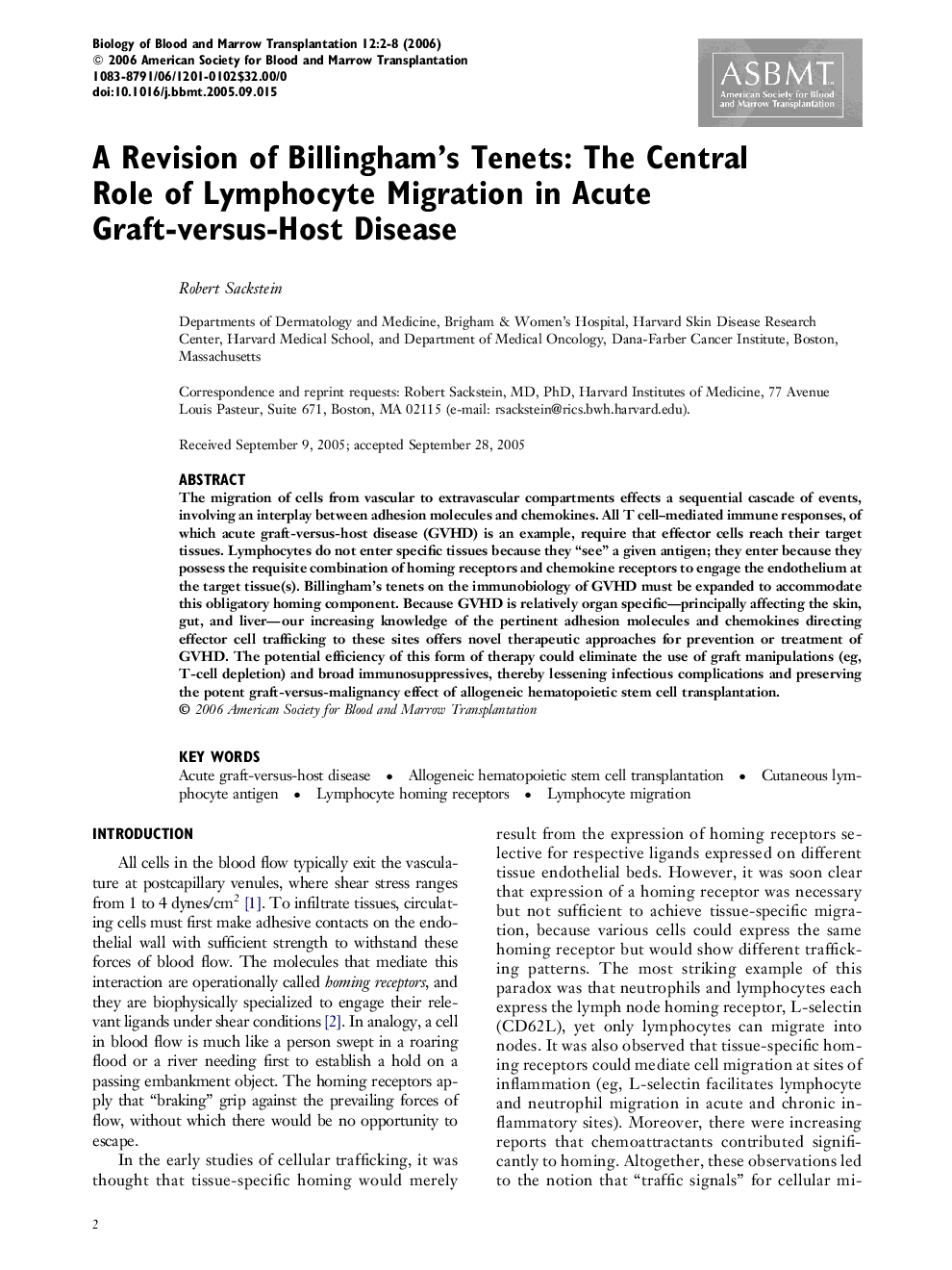| Article ID | Journal | Published Year | Pages | File Type |
|---|---|---|---|---|
| 2105209 | Biology of Blood and Marrow Transplantation | 2006 | 7 Pages |
The migration of cells from vascular to extravascular compartments effects a sequential cascade of events, involving an interplay between adhesion molecules and chemokines. All T cell–mediated immune responses, of which acute graft-versus-host disease (GVHD) is an example, require that effector cells reach their target tissues. Lymphocytes do not enter specific tissues because they “see” a given antigen; they enter because they possess the requisite combination of homing receptors and chemokine receptors to engage the endothelium at the target tissue(s). Billingham’s tenets on the immunobiology of GVHD must be expanded to accommodate this obligatory homing component. Because GVHD is relatively organ specific—principally affecting the skin, gut, and liver—our increasing knowledge of the pertinent adhesion molecules and chemokines directing effector cell trafficking to these sites offers novel therapeutic approaches for prevention or treatment of GVHD. The potential efficiency of this form of therapy could eliminate the use of graft manipulations (eg, T-cell depletion) and broad immunosuppressives, thereby lessening infectious complications and preserving the potent graft-versus-malignancy effect of allogeneic hematopoietic stem cell transplantation.
